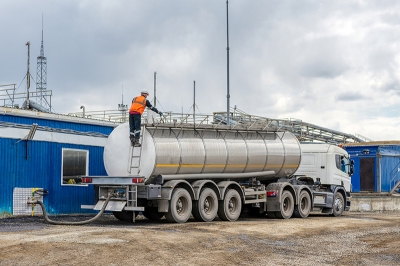
Your guide to Hazardous Waste disposal regulations

(Posted on 08/08/25)
In the UK, the management of hazardous waste is governed by a comprehensive set of regulations designed to protect human health and the environment. The primary legislation is the Hazardous Waste (England and Wales) Regulations 2005, which implements the EU Waste Framework Directive.
Here is a guide to the key aspects of hazardous waste regulations in the UK.
1. What is Hazardous Waste?
Waste is considered hazardous if it contains substances or properties that could be harmful to human health or the environment. This doesn't necessarily mean it's an immediate risk, but it must be managed carefully.
Examples of hazardous waste include:
- Asbestos
- Chemicals, such as brake fluid, paint thinners, and print toner
- Batteries (especially lead-acid and Ni-Cd)
- Oils (excluding edible oils), such as car oil
- Pesticides and herbicides
- Solvents
- Equipment containing ozone-depleting substances, like old refrigerators
- Fluorescent tubes and thermometers (due to mercury)
2. The "Duty of Care"
All businesses that produce, handle, or transport waste have a legal "Duty of Care". This means you must take all reasonable steps to ensure your waste is managed properly and does not harm people or the environment.
This duty of care includes:
- Classifying your waste correctly
- Storing your waste securely
- Using a licensed waste carrier to collect and transport the waste
- Ensuring the waste is taken to a legitimate site for treatment, recycling, or disposal
- Keeping accurate records of all waste transfers
3. Classifying Hazardous Waste
Correct classification is a critical first step. This process helps you determine how to handle and dispose of the waste safely.
- List of Waste (LoW) Codes: All waste is assigned a code from the List of Waste (LoW), also known as the European Waste Catalogue (EWC).
- Asterisked Codes: Codes marked with an asterisk (∗) indicate that the waste is generally hazardous.
- "Mirror Entries": Some codes have "mirror entries" where a hazardous and a non-hazardous code exist for similar waste types. In these cases, you must assess the waste's specific properties to determine if it's hazardous. This often involves checking for hazardous properties like toxicity, flammability, or corrosivity.
- Guidance: You can use a product's Material Safety Data Sheet (MSDS) or the government's technical guidance (such as the WM3 guidance) to help you classify your waste.
4. Handling and Storage
- Separation: You must separate hazardous waste from non-hazardous waste. It is also generally illegal to mix different types of hazardous waste.
- Secure Storage: Hazardous waste must be stored in suitable, sealed containers that prevent leaks or spills.
- Labeling: All containers must be clearly labeled with the correct hazard signs and the waste's description.
- Permits: Treatment, storage, and disposal facilities must hold the appropriate permits or licenses and comply with technical standards to avoid pollution.
5. Documentation and Paperwork
Every time hazardous waste is moved from your premises, it must be accompanied by a hazardous waste consignment note. This legal document provides a complete audit trail and includes:
- Details of the waste producer.
- A description of the waste, including its LoW code.
- The quantity of the waste.
- The hazardous classifications.
- Information about the waste carrier and the destination facility.
Both the waste producer and the carrier must keep a copy of this note. You are required to retain these records for a specified period (usually three years).
6. Who to Contact for More Information
- The Environment Agency: Provides detailed guidance and is the main regulator for hazardous waste in England. Similar bodies exist in other UK nations (e.g., Natural Resources Wales, Scottish Environment Protection Agency).
- Licensed Waste Contractors: Specialist waste contractors can provide expert advice on classification, collection, and disposal, ensuring you comply with all legal requirements.
For all of your Hazardous waste disposal requirements, please get in touch

 Like us on Facebook
Like us on Facebook Follow us on Twitter
Follow us on Twitter Find us on LinkedIn
Find us on LinkedIn